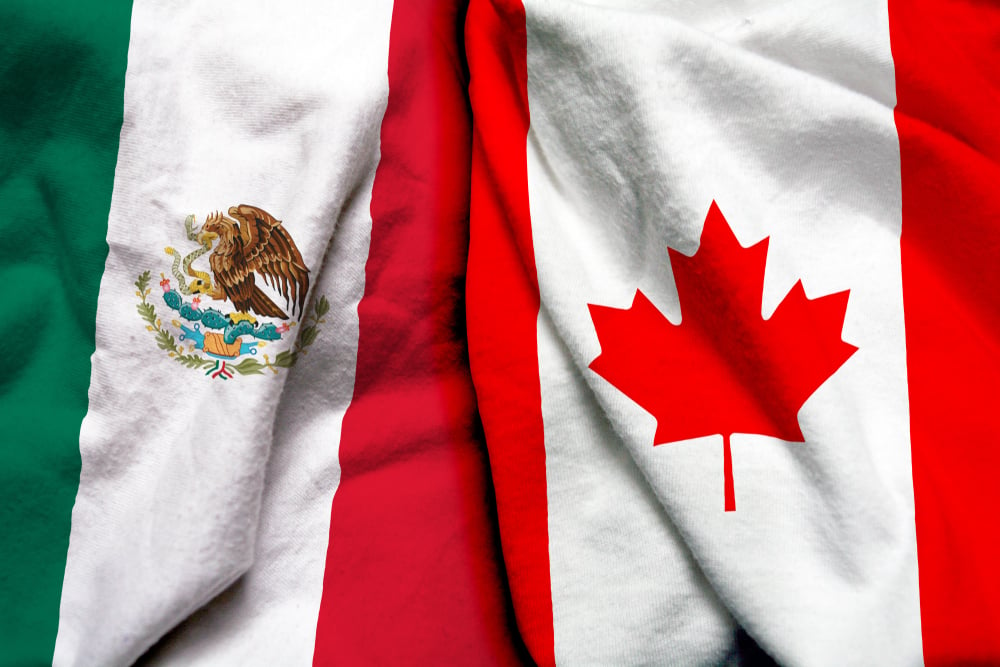Mexico has become an increasingly popular location for manufacturers searching for skilled and affordable labor near the U.S. market. In fact, in early 2023, Mexico surpassed China as the United States’ largest trading partner. This is partly due to manufacturers’ recognition of the many factors that make Mexico an exceptional manufacturing location.
That said, not every location across Mexico will offer identical advantages. Manufacturers must evaluate each location and visit potential factory sites to determine which location best suits their needs.
We suggest gathering information in the following five areas about all sites you are considering:
We will dive into those five factors below and suggest how to evaluate the information once you have performed your preliminary investigation.
Manpower
Mexico has long been recognized for its low-cost labor, a critical factor in its growing importance as a manufacturing labor source, especially amid global labor shortages. However, it's crucial to note that not all locations in Mexico offer the same labor dynamics. Many industrialized cities in Mexico, similar to parts of the US and Canada, are encountering challenges such as high turnover rates and escalating wages.
For instance, Tijuana has been grappling with monthly turnover rates as high as 15%. Ciudad Juárez is currently facing a shortfall of over 20,000 workers in the manufacturing sector. Additionally, cities like Monterrey, Mexicali, and Nogales face similar issues, with high turnover and increasing wage pressures, which can significantly impact operational stability and cost-effectiveness.
In contrast, locations like Mazatlán could present a more sensible choice. The city boasts a population exceeding 500,000, with steady growth over the last decade, and a youthful demographic, with over a quarter of its citizens aged between 10 and 24. This demographic profile suggests a robust future workforce pipeline, especially for manufacturers who invest in their workforce today.
Moreover, while considering average local wages, it's essential to look at unemployment rates and regional competition, which can influence wage levels. Union rates are also a critical factor. As your company grows, the need for more technical positions or supervisory roles will emerge. Many locations across Mexico have invested in specialized training at vocational or university levels, facilitating the development of a skilled workforce and enabling manufacturers to build relationships with educational institutions for future staffing needs.
Logistics
One of the primary drivers of manufacturing in Mexico is the country’s proximity to the U.S. market. This strategic advantage has led to the proliferation of maquiladoras in towns along the U.S.-Mexico border. However, as we discussed in the manpower section, intense competition in border cities like Tijuana, Juárez, and Monterrey has led to increased labor rates and high turnover. While proximity to the U.S. may benefit some, it's essential to weigh this against labor challenges.
In evaluating logistics for manufacturing locations in Mexico, consider the following key aspects:
- Transportation Network: Assess the connectivity to major highways, railways, and ports. Locations like Mazatlán offer deep-sea ports, international airports, and extensive rail and highway networks, providing diverse transportation options.
- Proximity to Markets: Determine the closeness to your primary markets. Northern cities offer proximity to the U.S., but southern locations might provide better access to other markets.
- Supply Chain Dynamics: Understand the local supply chain infrastructure. Are there local suppliers, or will materials need to be transported from afar?
- Customs and Cross-Border Trade: Evaluate the efficiency of customs processes. Locations with streamlined customs procedures can significantly reduce delays and costs.
- Future Infrastructure Developments: Investigate any planned infrastructure developments that could improve logistics in the future, such as the investment in rail infrastructure in Mazatlán.
- Cost Factors: Consider the associated logistics costs, including warehousing, labor for logistics, and handling fees.
By thoroughly examining these factors, manufacturers can understand the logistics characteristics of different locations in Mexico. While northern border cities like Tijuana, Juárez, and Monterrey offer the advantage of proximity, places like Mazatlán present a strategic blend of competitive costs and diverse logistical options, making them attractive for manufacturers who aim to balance cost with market access and overall logistical efficiency.
Infrastructure
As manufacturing in Mexico continues to grow, the demand for industrial real estate has surged. This increase in demand has led to varying costs and availability across different regions. For instance, leasing rates for industrial space are approaching $0.83 per square foot per month in highly industrialized areas like Tijuana. In contrast, costs in Mazatlán could be approximately 25% cheaper, offering significant savings.
When evaluating infrastructure in potential manufacturing locations, consider these key aspects:
- Industrial Real Estate Costs: Compare the leasing rates in different regions. Areas like Mazatlán can offer more affordable options compared to cities like Tijuana.
- Availability of Industrial Space: Assess industrial space availability and lead times. In more industrialized areas, the lead time for new buildings can be longer due to high demand.
- Utilities and Services: Evaluate the access to essential utilities like electricity, water, and telecommunications. While many parts of Mexico are well-connected, the infrastructure level can vary, especially in more rural regions.
- Specific Infrastructure Needs: Consider the specific infrastructure needs of your operation, such as natural gas supply, which can be uneven across different locations.
- Water Management: Given the importance of water management, especially in areas prone to drought, investigate the availability of water reuse programs and support infrastructure like private pumping stations or desalination plants.
- Shared Utility Needs: For manufacturers considering a standalone site, factor in the costs of bringing infrastructure to the site. Alternatively, locating in an industrial park with build-to-suit space can provide shared utility needs and manufacturing-specific infrastructure.
By carefully considering these factors, manufacturers can gain a detailed understanding of the infrastructure landscape in Mexico. While industrialized cities like Tijuana offer developed infrastructure, the costs and lead times may be higher. In comparison, locations like Mazatlán not only provide more competitive costs but may also offer quicker access to industrial space, making them an attractive option for manufacturers seeking cost-effective and efficient infrastructure solutions.
Trade partners
The distribution of manufacturing in Mexico is not uniform but concentrated in certain regions, each known for specific industrial clusters. These clusters provide a competitive advantage due to the concentration of suppliers and skilled labor and facilitate more accessible collaboration and innovation within particular industries.
When considering trade partners and industrial clusters, manufacturers should explore the following:
- Industry-Specific Clusters: Identify regions with a strong presence in your industry. For example, the automotive industry is prominent in regions like Hermosillo, where Ford’s stamping and assembly plant has attracted numerous automotive component suppliers.
- Proximity to Major Players: Assess the benefits of being close to major companies in your sector. Proximity can lead to better networking opportunities, potential partnerships, and a deeper understanding of market trends.
- Supply Chain Integration: Consider how your location can facilitate integration into the existing supply chain. Being near suppliers and customers can reduce transportation costs and lead times.
- Local Investment in Industry: Look at areas where there is significant investment in your industry, such as training facilities or research centers. For instance, Bombardier’s factory and investment in training facilities in Queretaro have spurred a fast-growing aerospace cluster.
- Competitive Landscape: Evaluate the level of competition in the area. While being in a cluster can offer advantages, more competition might be needed. For example, Mazatlán provides a strategic location for automotive suppliers looking to serve markets like Nissan’s factory in Aguascalientes, with less manufacturing competition than other regions.
- Emerging Opportunities: Keep an eye on emerging industrial areas that offer early-mover advantages. These regions could provide untapped markets, less competition, and potential government incentives.
By thoroughly assessing these factors, manufacturers can strategically choose a location that aligns with them and offers the best potential for growth, collaboration, and efficiency in their operations. While established clusters like those in Hermosillo and Queretaro provide immediate benefits, emerging areas like Mazatlán present unique opportunities for manufacturers looking to capitalize on less saturated markets with growing potential.
Operating costs
Understanding and comparing the operating costs across different regions in Mexico is a critical step in evaluating potential manufacturing sites. These costs encompass a range of factors that can significantly influence the overall financial efficiency of a manufacturing operation.
Consider the following key aspects of operating costs in Mexico:
- Labor Costs: As highlighted in the manpower section, labor costs can vary significantly between regions. While industrialized cities like Tijuana, Monterrey, and Ciudad Juárez may have higher labor costs due to competition and demand, locations like Mazatlán often offer more competitive labor rates.
- Utility Costs:
- Electricity: The cost of electricity is generally consistent across Mexico, but the reliability of the electrical grid can vary, which is crucial for uninterrupted operations.
- Water: The cost of water may not vary greatly, but its availability is a primary concern. For instance, Monterrey faces challenges with reliable water access, which is vital for many manufacturing processes.
- Natural Gas: The availability and cost of natural gas can differ by region, impacting both operational feasibility and expenses.
- Real Estate Costs: Industrial space leasing rates differ widely. Tijuana, for example, has rates around $0.83 per square foot per month, whereas Mazatlán offers potentially 25% lower costs.
- Supply Chain and Logistics Costs: These include transportation, warehousing, and handling costs, which can be influenced by the location's logistics infrastructure.
- Regulatory and Compliance Costs: These vary by region and include taxes, customs duties, and industry-specific regulations.
- Ancillary Costs: Additional costs such as insurance, security, and maintenance can vary depending on the location's safety and infrastructure quality.
By thoroughly evaluating these operating costs, manufacturers can identify the most cost-effective location for their specific needs. While some areas might offer lower labor or real estate costs, others might compensate with lower utility or logistics costs. A comprehensive analysis of these factors is essential for ensuring long-term financial sustainability and operational efficiency.
Evaluate your sites
As you gather data on potential manufacturing sites, working with a shelter service provider like Tetakawi can be immensely beneficial. Tetakawi, with its access to real-time data and deep understanding of the Mexican manufacturing landscape, can provide invaluable insights and guidance in your site evaluation process.
- Access to Real-Time Data: Tetakawi's access to up-to-date information on labor costs, real estate prices, utility availability, and other key factors can help you make a more informed decision. This real-time data is crucial in a dynamic market where conditions can change rapidly.
- Expertise in the Mexican Market: Tetakawi's expertise in the nuances of the Mexican manufacturing sector can help you navigate the complexities of site selection, ensuring that you consider all critical factors.
- Expansion into Mazatlán: Recognizing the unique advantages that Mazatlán offers, Tetakawi is expanding its operations into this region. Mazatlán's blend of competitive costs, strategic location, and growing infrastructure makes it an increasingly attractive option for manufacturers.
- Success Stories: Tetakawi's role in assisting major companies like Consolidated Precision Products (CPP) highlights their capability. CPP's decision to establish their next operation in Mazatlán, facilitated by Tetakawi's insights and support, underscores the potential of this location for manufacturing excellence.
- Comprehensive Support: Beyond site selection, Tetakawi offers a range of services to support your manufacturing operation, from navigating legal and regulatory frameworks to providing ongoing administrative and operational assistance.
By partnering with Tetakawi, you can leverage their expertise and resources to ensure that your site selection is not only based on current data but also aligns with your long-term strategic goals. Whether you're considering Mazatlán or other locations in Mexico, Tetakawi's guidance can be instrumental in your decision-making process, helping you to establish a successful and sustainable manufacturing presence in Mexico. Contact us today to start exploring the possibility of expanding into Mexico.
Subscribe
Sign up and stay informed with tips, updates, and best practices for manufacturing in Mexico.






